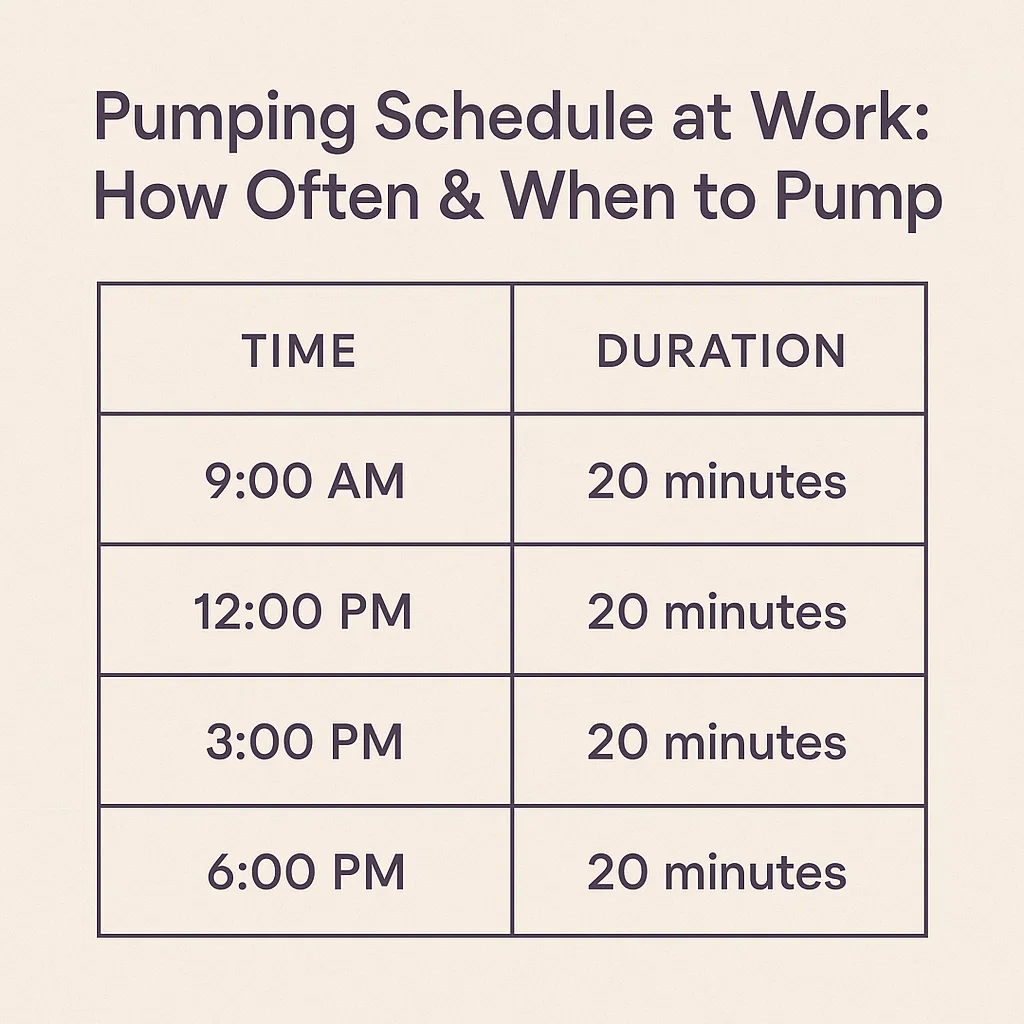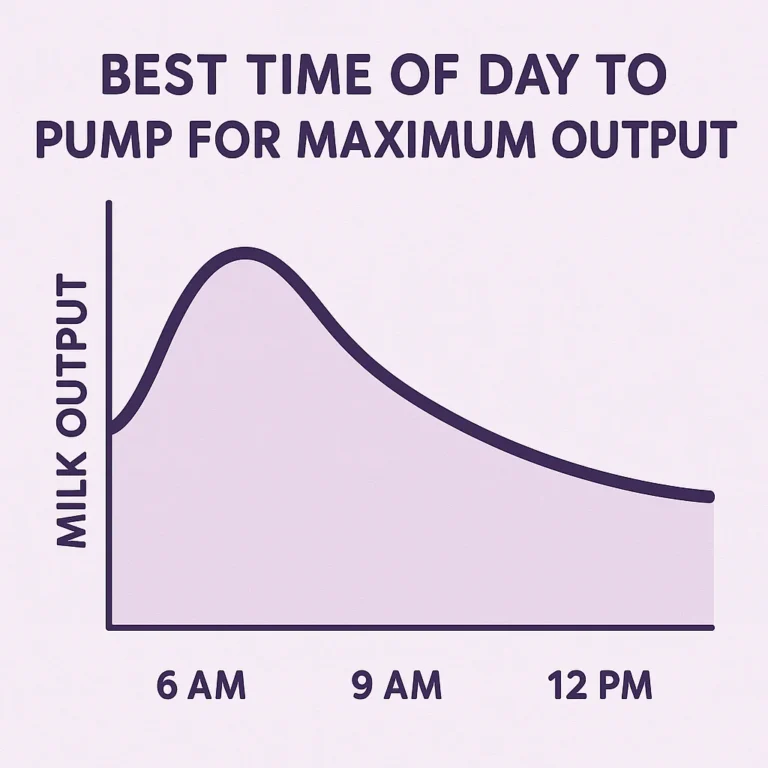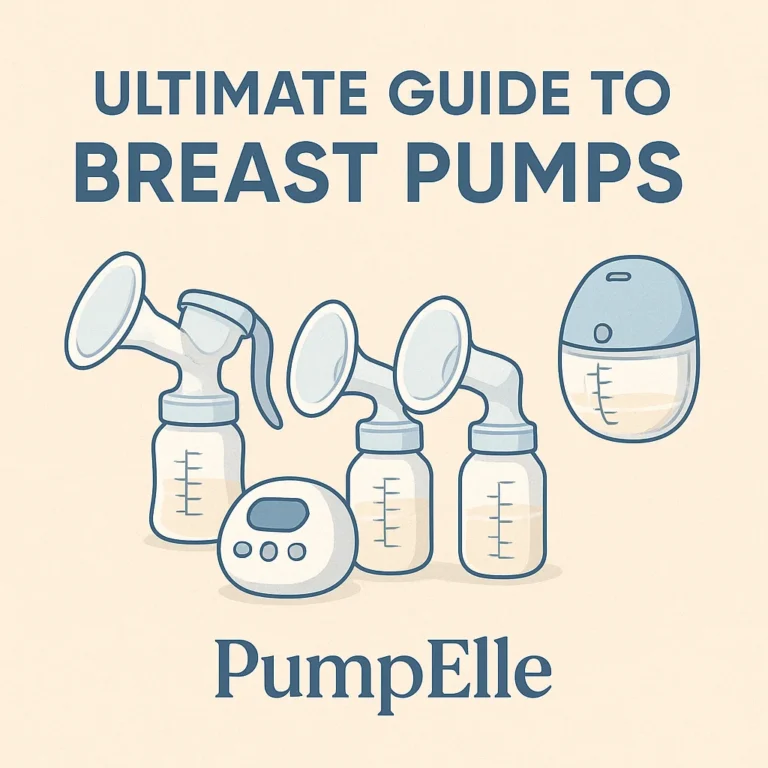Pumping Schedule at Work: How Often & When to Pump
Heading back to work while breastfeeding? You’re not alone — and you’re not without options. Crafting a consistent pumping schedule at work is one of the best ways to maintain your milk supply, protect your breastfeeding goals, and keep your baby nourished even when you’re apart.
Whether you’re working a desk job, in healthcare, or on your feet all day, this guide breaks down realistic and flexible pumping schedules that fit into your work life without overwhelming it.
Why a Pumping Schedule at Work Is Important
Returning to work doesn’t mean giving up breastfeeding. A well-structured pumping schedule helps:
- 💧 Maintain milk supply
- 🍼 Keep up with baby’s feeding needs
- 🕒 Prevent engorgement and clogged ducts
- 🧠 Reduce stress and boost confidence
Consistency is key — the more regular your sessions, the better your body responds.
How Often Should You Pump at Work?
A general rule of thumb: Pump as often as your baby would feed. For a 6-month-old, this typically means:
| Baby’s Age | Recommended Pumping Frequency |
|---|---|
| 0–3 months | Every 2–3 hours (3x/day) |
| 3–6 months | Every 3–4 hours (2–3x/day) |
| 6+ months | Every 4 hours (2x/day) |
➡️ Most moms need 2 to 3 pumping sessions per standard 8-hour workday. For the best tools to make pumping efficient, check out our guide on how to choose the best breast pump for new moms.
Sample Pumping Schedule for an 8–5 Job
| Time | Activity |
|---|---|
| 7:00 AM | Nurse baby |
| 10:00 AM | First pump |
| 1:00 PM | Second pump |
| 4:00 PM | Optional pump |
| 6:00 PM | Nurse again |
Adjust the times based on your commute, baby’s feeding habits, and personal comfort. If you’re looking for a high-quality pump to streamline your sessions, consider the S9 Pro Hands-Free Breast Pump with LED Display for a convenient, efficient option.
Tips to Make Pumping at Work Easier
✔️ Use a double electric pump for efficiency. The High Suction Electric Breast Pump is a great option for painless, silent pumping.
✔️ Create a routine that includes relaxation triggers (baby photos, soft music).
✔️ Wear hands-free pumping bras. A wearable automatic breast pump can make pumping on the go easier.
✔️ Store milk safely using labeled bags or bottles.
✔️ Clean parts quickly with breast pump wipes or steam bags.
Don’t forget to pack:
- Pump + charger
- Storage bags/bottles
- Ice packs & cooler
- Extra parts and cleaning supplies
If you’re eligible for a free pump through insurance, learn how to get one in our guide on getting a free breast pump through insurance in Los Angeles, California.
How to Talk to Your Employer
Under the Fair Labor Standards Act, you’re entitled to:
- 🛑 Reasonable break time for pumping
- 🚪 A private, non-bathroom space to express milk
Be clear about your needs early on — most employers are happy to support you when you provide a plan. For a comparison of top pumps to help you decide what’s best for your workplace setup, read our breakdown of the Spectra S1 Plus vs. Medela Pump in Style.
Realistic Tips from Pumping Moms
“I blocked my pumping times on my work calendar like meetings. It helped me stay consistent.”
— Jenna, marketing manager & mom of 2
“Wearing a poncho while pumping at my desk (in a private corner) was a game-changer!”
— Karina, nurse practitioner
Final Thoughts
Creating a personalized pumping schedule at work helps you balance your career with your breastfeeding goals. For a 6-month-old, pumping every 3–4 hours during an 8-hour workday is ideal to maintain your milk supply and meet your baby’s nutritional needs. This is a short phase, but it has a lasting impact on your baby’s health and your bond.
➡️ Ready to build your work pump kit? Browse the best breast pumps, tubing, coolers, and accessories at PumpElle.com.






